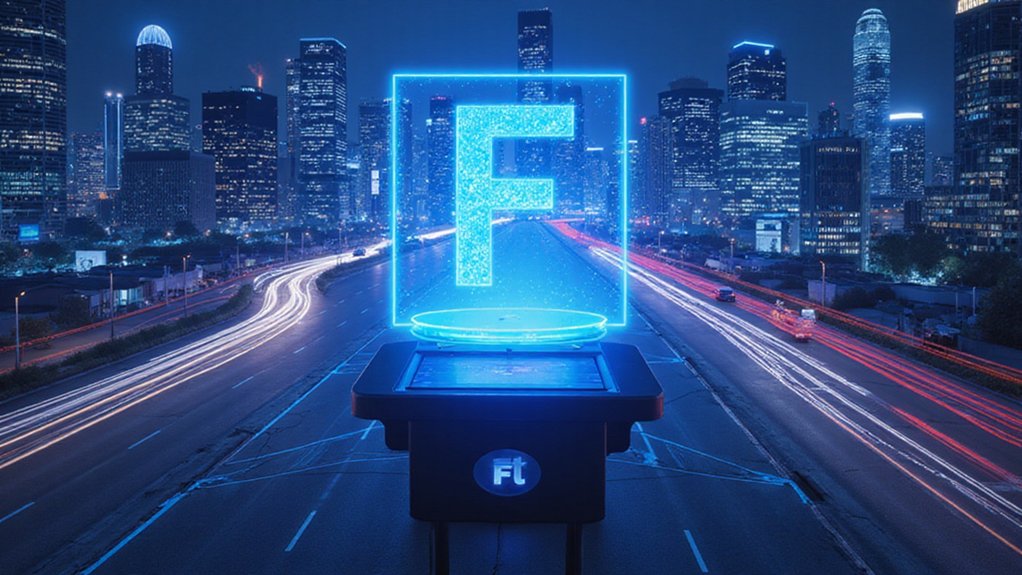Fetch.ai is a decentralized digital platform that merges blockchain technology with artificial intelligence to create an economic framework where autonomous agents interact and perform tasks. Founded in 2018 by a team including DeepMind investor Humayun Sheikh, the system utilizes the FET token to incentivize network contributions while facilitating transactions across its ecosystem. From supply chain optimization to smart city management, Fetch.ai‘s applications span numerous sectors—each deployment showcasing the platform’s capacity to address real-world inefficiencies through its agent-based architecture.

In the rapidly evolving landscape of blockchain technology, Fetch.Ai emerges as a compelling synthesis of artificial intelligence and distributed ledger systems—a technological chimera designed to birth a truly decentralized digital economy.
This AI-backed blockchain environment orchestrates a suite of autonomous economic agents operating within an Open Economic Framework, all underpinned by the Fetch Smart Ledger—a trifecta of innovation that promises to revolutionize how digital entities interact and transact.
A technological triad enabling digital entities to function autonomously within an economic ecosystem of unprecedented fluidity and intelligence.
The platform’s architecture leverages large language models to execute tasks and route agents through its proprietary AI engine, while the Agentverse serves as the marketplace where these digital entities are built, listed, and hosted.
Analytics capabilities allow users to monitor agent performance with the precision one might expect from a Bloomberg terminal (though mercifully more intuitive).
For those concerned with the physical world’s integration, Fetch.Ai’s IoT Gateway enables offline message collection—bridging the often-neglected gap between silicon and reality.
These autonomous agents—operating without human intervention yet ostensibly for human benefit—perform economic tasks across a spectrum of applications including smart cities, supply chain optimization, and transportation solutions.
The system’s machine learning capabilities continuously refine decision-making processes, addressing the perennial challenge of scalability that has plagued many blockchain projects.
At the economic core of this ecosystem resides FET, an ERC-20 utility token that functions as both transaction medium and computational currency. Similar to Bittensor’s approach with its TAO token economy, Fetch.Ai incentivizes participants through FET rewards for contributing to the network’s intelligence and functionality. The visionary project was brought to life by an impressive team including co-founder Humayun Sheikh, who was also an early investor in DeepMind.
Initially released in 2018 (practically prehistoric in crypto terms), FET has established itself across various exchanges as the lifeblood of the network.
The Fetch Smart Ledger facilitates data sharing among agents with blockchain-grade security, supporting complex economic interactions within a framework designed for performance optimization.
This infrastructure enables applications spanning from traffic management to energy distribution, healthcare coordination to educational systems—a proof to the platform’s versatility in addressing real-world inefficiencies through its marriage of distributed ledger technology and artificial intelligence. The platform recently celebrated a significant milestone with the integration of ASI-1 Mini, the world’s first Web3-native LLM specifically designed for Agentic AI applications in the luxury automotive sector.
Frequently Asked Questions
How Does Fetch.Ai Compare to Other AI Blockchain Platforms?
Fetch.ai distinguishes itself from competitors like Numeraire and SingularityNET through its extensive interoperability and autonomous economic agents.
While other platforms may excel in specific AI applications, Fetch.ai’s modified Tendermint PoS consensus, Cosmos SDK integration, and digital twin technology create a more versatile ecosystem.
Its Open Economic Framework facilitates agent-based marketplace interactions that most competitors haven’t matched, and its CoLearn framework enables decentralized machine learning—a feature that remains relatively nascent elsewhere in the blockchain-AI intersection.
What Are the Potential Risks of Investing in FET Tokens?
Investing in FET tokens carries a portfolio of notable risks.
Market volatility presents the most immediate concern, with FET’s price history resembling a financial rollercoaster rather than a steady climb.
Structural concerns—including the platform’s complex multi-entity arrangement—raise transparency questions.
Large holders’ recent selling patterns have undermined market confidence, while regulatory uncertainties loom.
Additionally, FET’s dependence on autonomous service adoption represents a fundamental vulnerability that could undermine its long-term value proposition.
Can Fetch.Ai Agents Interact With Traditional Financial Systems?
Fetch.AI agents can indeed interact with traditional financial systems through several technical bridges.
The platform’s Open Economic Framework mirrors conventional market structures, while its blockchain settlement layer provides the trust backbone necessary for institutional adoption.
Through specialized agent frameworks and smart contracts (particularly the almanac contract), these autonomous entities can access financial data, execute transactions, and integrate with existing workflows—creating hybrid systems rather than requiring wholesale replacement of established financial infrastructure.
How Does Fetch.Ai Ensure Privacy in Its Autonomous Agent Ecosystem?
Fetch.ai guarantees privacy through multiple interconnected mechanisms in its autonomous agent ecosystem.
The platform integrates with Ocean Protocol for privacy-preserving data exchange while implementing a “Compute to Data” model that processes information without exposing raw data.
Agents maintain self-governance, minimizing unnecessary data exposure through localized processing and stateful memory.
The architecture deliberately avoids centralized data lakes, instead utilizing decentralized storage solutions like Storj that keep private information under sovereign user control through permissioned smart contracts.
What Regulatory Challenges Might Affect Fetch.Ai’s Future Development?
Fetch.ai faces a veritable regulatory minefield: evolving AI governance frameworks (particularly concerning algorithmic bias and decision transparency), cross-jurisdictional blockchain compliance requirements, and financial oversight intensified by its corporate restructuring history.
Its administration proceedings in the UK could trigger heightened scrutiny, while its multi-jurisdictional shuffle between Singapore and Dubai might raise regulatory eyebrows.
The convergence of uncertain AI regulations with stringent AML/KYC requirements further complicates its autonomous agent deployment roadmap—a perfect storm of compliance challenges.









